../../../..//2007/12/11/china-and-us-sign-product/
China and US sign product safety pact. Lucky thing they got that one banged out before Christmas. [AP]
Thanks for visiting Consumerist.com. As of October 2017, Consumerist is no longer producing new content, but feel free to browse through our archives. Here you can find 12 years worth of articles on everything from how to avoid dodgy scams to writing an effective complaint letter. Check out some of our greatest hits below, explore the categories listed on the left-hand side of the page, or head to CR.org for ratings, reviews, and consumer news.
../../../..//2007/12/11/china-and-us-sign-product/
China and US sign product safety pact. Lucky thing they got that one banged out before Christmas. [AP]
../../../..//2007/12/06/recalls-starbucks-fusion-coffee-mugs/
Recalls: Starbucks Fusion Coffee Mugs (burn), Home Depot Holiday Figurines (lead), Scope Apparel Boys’ Hooded Sweatshirts with Drawstrings (strangulation), RC2 First Years 3-in-1 Flush and Sounds Potty Seats (lead), RC2 First Years Newborn-to-Toddler Reclining Feeding Seats (falling), Sears Personal Identity-brand V-neck sweaters with hood (strangulation), Basic Editions-brand girls’ clothing sets (entrapment, strangulation), TKS-brand children’s pants (entrapment), Collins International Oscillating Ceramic Heaters sold at Menards (fire), Polaris Ranger RZR 800 EFI Utility Vehicles (fire, burn), Bowflex® Ultimate 2 Home Gyms (injury).
../../../..//2007/12/05/you-can-enter-your-kids/
You can enter your kids’ toys here and find out if they’ve been recalled for toxins. [HealthyToys.org]
../../../..//2007/12/03/an-amusing-animation-depicting-the/
An amusing animation depicting the CPSC’s epic failures through song and dance, brought to you by Consumers Union, makers of Consumer Reports. Unfortunately, neither the Chinese Poison Train nor Snively Whiplash made an appearance. [NotInMyCart]
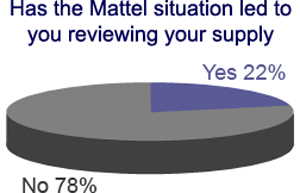
A survey of global manufacturers found that only 22% have reviewed their supply chain in light of the Mattel lead toy recall situation. Of that number, 1/3 said they would change how they go about evaluating suppliers. 30% said they were sending quality inspectors to overseas plants. Most of the executives said their greatest fear in doing business with China wasn’t defective products, but that the Chinese would make knockoffs of their wares.

Here’s something everyone can be thankful for—the Chinese, Europeans, and tangentially everyone in America and the rest of the world who have spent the better part of last year dodging lead bullets from the factory nation. The European Union’s consumer chief has said that China has made “quantum leaps” in improving its safety protocols, and will therefore not face a ban in the EU.

This week, California’s attorney general filed a lawsuit against 20 companies implicated in the various lead-tainted toy fiascos of 2007. The lawsuit “alleges that the companies violated the Safe Drinking Water and Toxic Enforcement Act of 1986… because they didn’t notify customers of toys in the marketplace that contained high concentrations of lead.” The federal government doesn’t require such labeling, but California does.

What are you feeding your children tonight? How about a hearty helping of lead? KUTV did a followup on their report yesterday about lead in dinner plates. Their investigative reporter bought more plates from Walmart. After heating them to 85 degrees, the plates leached out lead at .381 parts per million. The plates were made in China. The government says that anything below 2.0 is acceptable. But unlike a toy where you’re mainly just coming in skin contact with the toy, with a plate, the lead is actually seeping into the food and you’re eating it.
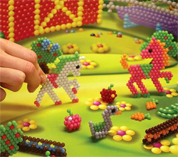
The CPSC says 9 children have been hospitalized after eating Aqua Dots beads. The craft toy contains a glue that breaks down in party drug GHB when ingested. The toy was made by a Chinese factory, whose license was suspended following the recall. Reportedly, the toxic glue cost 1/3 less than the glue they were supposed to use.
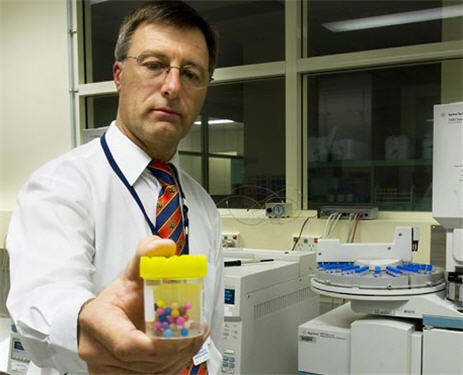
The New York Times has a great article about the doctor who figured out that the “Aqua Dots” or “Bindeez” beads were full of GHB. It reads like a summary of an episode of House, M.D.:
Doctors at the Children’s Hospital at Westmead, outside Sydney, first believed that the 2-year-old boy, whose name has not been released, had an inherited metabolic disorder. But when Dr. Carpenter checked urine samples the next day for the chemical markers of the disorder, he found GHB, which can render victims unconscious and even cause death through respiratory failure.
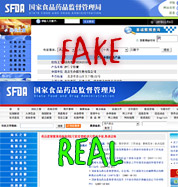
The Chinese government has discovered a fake diabetes medicine on a fake research institute website, which then links to a fake version of the official government health and drug watchdog agency’s site. If you’re paying attention to urls, it’s hard to not notice that something’s wrong—but we’re sure there’s more than enough people who don’t notice that little detail.
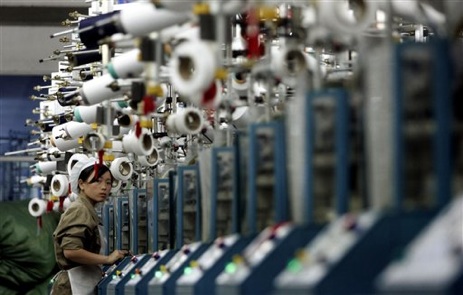
Worried that the whole tainted export thing might further poison their image, China this week revoked the export licenses of 750 toy factories citing quality control problems. The move came just as the Senate Commerce Committee passed the CPSC Reform Act, which would strengthen domestic toy safety standards and impose penalties of up to $100 million on companies that sell dangerous toys.
Despite the announcement of the license suspensions, Chinese regulators said 99 percent of toy exports in southern Guangdong Province, near Hong Kong, met quality standards.

A CPSC spokeswoman said this week that Wal-Mart’s independent recall of lead-tainted toy animals on October 19th was all well and good, but that they should have included more information that consumers need in order to act quickly—including how many products were sold, when they were sold and at what other retailers, and the name of the manufacturer. Said the spokeswoman, “We are not big fans of when companies handle recall announcements independently of the agency. It can cause confusion and doesn’t always provide consumers with the information they need.”
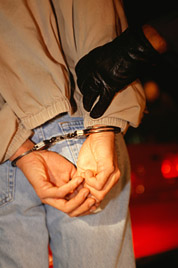
China has arrested nearly 800 people over the past two months in a “nationwide crackdown on the production and sale of tainted food, drugs and agricultural products,” writes the New York Times. The country announced the number officially today on their website, but did not provide details on the violations involved. The announcement is part of a larger campaign to not only rehabilitate China’s image around the world, but to address concerns that its domestic products are even less likely to be safe.
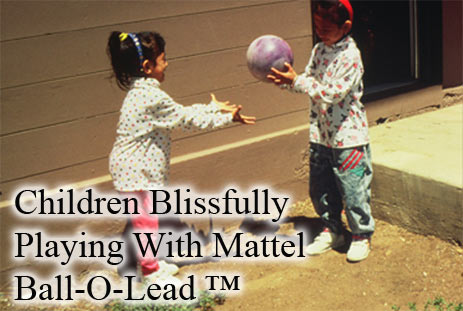
So the CPSC is always recalling all sorts of crap, like the surprising candles which could lead to fire, or the snowboards which could lead to falling, but as a concerned parent, all you care about is the toys. The freakin’ toys. The ones with the lead and the chokey parts. Well, even though their website coder probably doubles as the meatloaf server at lunchtime, they’ve got a catchall page that is your go-to spot for all the toy hazard related recalls. Just memorize the simple URL: http://www.cpsc.gov/cpscpub/prerel/category/toy.html.
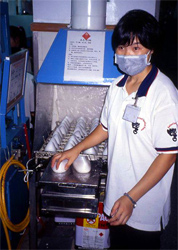
The Salt Lake Tribune has a special series written by a reporter who spent a year in China investigating the conditions in 25 factories. While Americans are running around concerned about the long-term effects of lead in toys, real Chinese workers are dying in deplorable working conditions as they put together our cheap gas grills and La-Z-Boy recliners so we can enjoy them at everyday low prices.
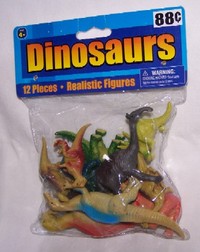
A plague of lead has stricken Walmart’s stock of “realistic animals”. Affected animals include farm animals, jungle animals, and even the feared dinosaur. The animals are currently trapped in chinsy cellophane bags clad shut by a brandless cardboard strip that proudly boasts: 88 Cents!
“Wal-Mart said independent testing revealed excessive levels of lead in the base material, not the surface coating.”
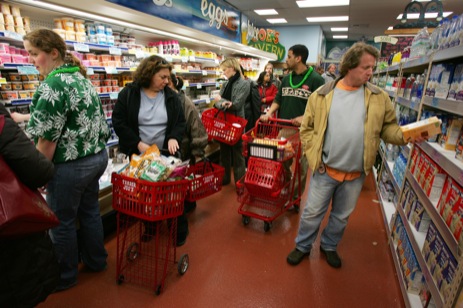
Caving to xenophobia, Trader Joe’s announced that it will purge its shelves of all single-ingredient Chinese products by January 1. Will consumers be any safer?
![]()
Part of ![]()
Founded in 2005, Consumerist® is an independent source of consumer news and information published by Consumer Reports.
